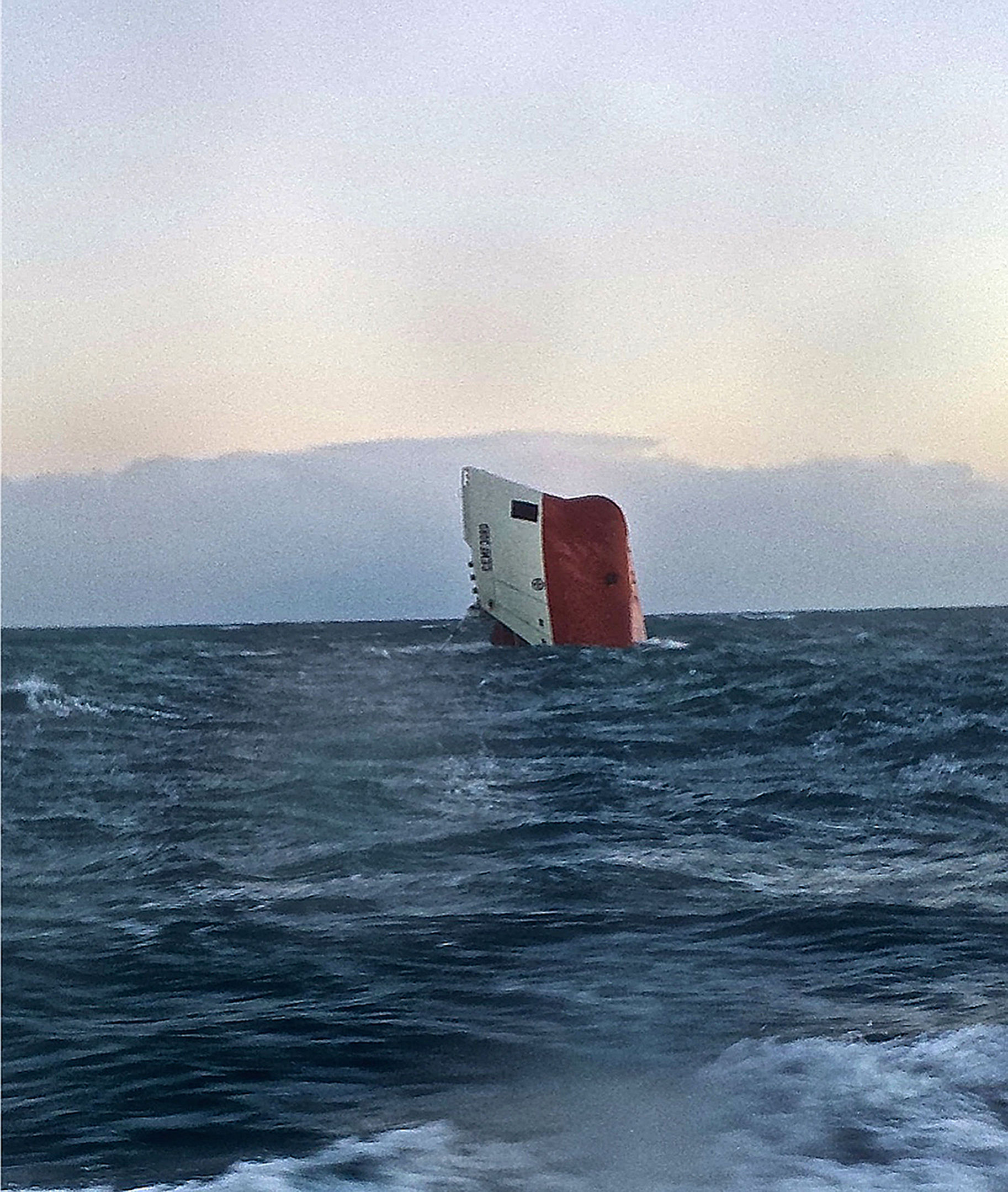The sinking of a cargo ship that claimed the lives of eight men was down to an underestimation of the severity of the conditions and “perceived or actual commercial pressure” to press ahead with the journey, an investigation has found.
A Marine Accident Investigation Branch (MAIB) review has found the deaths of the eight Polish and Filipino crew onboard the Cemfjord could have been avoided.
The upturned hull of the Cypriot-registered cement carrier was spotted in the Pentland Firth by a passing ferry on January 3 2015.
It had been travelling from Aalborg, Denmark, to Runcorn, Cheshire, but capsized so quickly on January 2 in “extraordinarily violent sea conditions” that the crew did not have time to issue a distress call.
An extensive coastguard search followed but none of the crew were found. The ship remains at the bottom of the Pentland Firth as a sea grave.
The MAIB investigation highlights a series of failings in the planning of the Cemfjord’s voyage, pressure to complete the journey and “significant safety deficiencies relating to its rescue boat launching arrangements and bilge pumping system”.
The capsize went unnoticed for a day because Cemfjord’s progress through the Pentland Firth was not being monitored and Shetland Coastguard did not require vessels to report when exiting the voluntary reporting scheme area, MAIB said.
The vessel’s managing company, Brise Bereederungs, has implemented several safety changes since the accident, including enhancements to stability management and weather forecasting capabilities.
The Department of Merchant Shipping in Cyprus has also introduced a new process for managing requests from shipping companies exemptions from international safety regulations, according to the MAIB.
Steve Clinch, chief inspector of marine accidents, said: “The MAIB investigation found that Cemfjord capsized in extraordinarily violent sea conditions; a fatal hazard that was predictable and could have been avoided.
“The decision to enter the Pentland Firth, rather than seek shelter, was almost certainly a result of poor passage planning, an underestimation of the severity of the conditions and perceived or actual commercial pressure to press ahead with the voyage.
“Critically, this decision will also have been underpinned by an unwillingness to alter course across the heavy seas after the experience of a cement cargo shift in similar circumstances about three months before the accident.
“The appalling conditions and rapid nature of the capsize denied the crew an opportunity to issue a distress message or to escape from their ship.
“Although not a causal factor of the accident, it was also established that Cemfjord was only at sea because of Flag State approved exemptions from safety regulations.
“This tragic accident is a stark reminder of the hazards faced by mariners at sea and the factors that can influence decision making in such treacherous circumstances.”
Further MAIB recommendations have been made to Brise to train crew in its new safety procedures; and for the UK Maritime and Coastguard Agency (MCA) to consider making the Pentland Firth voluntary reporting scheme compulsory and whether extreme weather warnings should be broadcast to ships in the Pentland Firth.
An MCA spokeswoman said the MAIB recommendations will be looked at carefully.
She added: “There is an ongoing consultation about the emergency towing vessel.
“The MCA has recently secured funding to extend the current contract for one emergency towing vessel based in the Orkneys and this coverage will now expire September 30 2016.
“In the meantime, the MCA is currently engaging with regional stakeholders in Scotland whilst it explores alternative options and arrangements.”
ends










